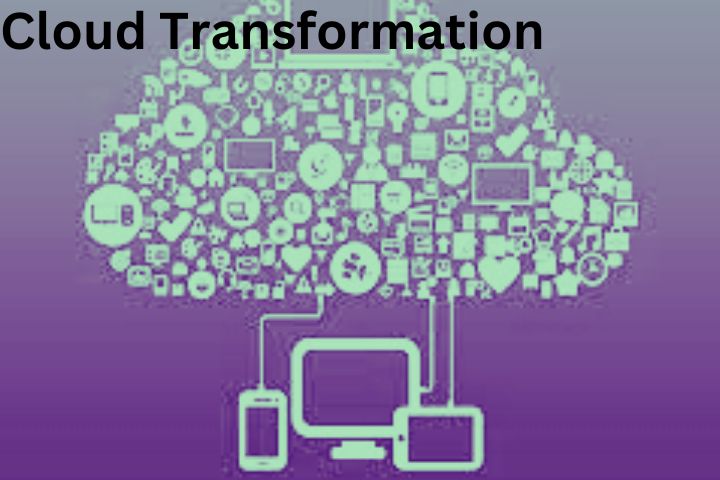
To counteract climate change, acting in a way that conserves resources as much as possible is necessary. This also applies to software development and the operation of IT infrastructures, where the GreenOps approach rarely plays a role.
There is no doubt that digital transformation can positively impact sustainability in business life. The digitization of processes reduces paper usage and protects our planet’s resources.
The consistent use of online conference solutions is another example. Because where you have to travel less often, fewer resources are used.
There is particular potential in GreenOps. The cloud plays a crucial role in most digital processes today.
At first glance, cloud usage is also resource-friendly. After all, companies do not have to maintain their own data center and use hyper-scaler infrastructures jointly by several companies. But things are not that simple.
The unchecked growth of the cloud – also in terms of energy
According to current statistics, there is no sign of a slowdown in cloud adoption in companies. In some cases, spending on cloud technologies is growing by almost 100 percent annually.
The downside:The energy consumed by data centers doubles every four years. And even in the best-case scenario, the industry will likely account for around eight percent of electricity demand by 2030.
Associated with the corresponding emissions of greenhouse gases. The industry can do something about this if it recognizes the possibility of relieving the environmental burden as early as the development process.
Code and data generate greenhouse gas emissions.
The beginning of a greener cloud is the realization that code and data in the cloud cost energy and are responsible for greenhouse gas emissions.
On the way to more sustainable IT and software development, it is not enough to rely on cloud providers already making enough efforts to make their systems more energy efficient.
Or to choose the provider that makes the biggest promise of sustainability. Active intervention by cloud users, i.e., the companies themselves, is required. And this works with tools and a new topology of teams.
GreenOps: Dev and Ops in interaction
The development teams directly involved in the development have a key role to play in achieving green IT and GreenOps. In the spirit of agile development, important design decisions are made there that react to customer requirements (including internal customers).
The teams’ decisions on a certain architecture and structure, even code design, can directly impact the energy consumption of an application.
As in other sections of the population, there is a growing awareness among developers that their decisions and actions directly influence the climate.
Cloud providers are responding to this growing awareness with tools that calculate and display the climatic footprint of systems and provide pointers for optimization.
With the Cloud Carbon Footprint (CCF), there is an open-source tool to visualize estimated CO2 emissions based on AWS, GCP, and Azure usage.
In modern software development, development teams are used to thinking about maintenance, scalability, and costs. So energy consumption is another point to consider.
Influence on the climatic balance of the structures
However, other experts must actively contribute their knowledge to achieving climate goals. These are the employees who focus on the topic of the platform, whether within the DevOps approach or as an independent team.
They are further removed from the needs of the customers and, therefore, cannot offer suggestions for the energy optimization of a single application’s workloads. But they have the insight and knowledge of cross-sectoral infrastructure issues and therefore have a major impact on the climatic balance of the entire structure and development.
Upgrading an instance to low-power processors or optimizing virtual machine templates reduces power consumption—typically for other teams and applications. Ops professionals also typically use tools to monitor a system constantly.
However, the values alone do not indicate whether a service is available. With the right awareness, insights can also be gained from the data on whether resources are wasted here because there are too many idle times.
Or the actual workload doesn’t require that large an instance at all. There are many starting points here, including scripts that switch off services or reduce data traffic in off-peak times.
On the way to GreenOps
Some tools implement the necessary knowledge for the climatic effects when building infrastructures and code development: For IT to become greener, organizations must derive a strategy from the awareness, the ideas, the use of tools, and the knowledge of the experts that are permanently in the company is anchored. GreenOps should be part of the topology of contemporary team structures that consider climate protection and accompany the transformation to green IT.
The GreenOps do not care about specific optimizations at the infrastructure or even the code level. They define the strategy for the entire organization. This begins with the definition of (climate) goals, the planning of specific measures, and the task of procuring the necessary tools and resources for DevOps teams to implement the strategies.
In a team for GreenOps, all stakeholders contribute their experience: Financial aspects, knowledge from development (e.g., how workloads can be streamlined and optimized), and the expertise of Ops, who know the big picture of infrastructures and the special features of hyperscalers and cloud providers. This strategic approach not only helps the climate. It also benefits the company directly because less consumption of resources is usually associated with lower costs, ultimately benefiting the entire company.









